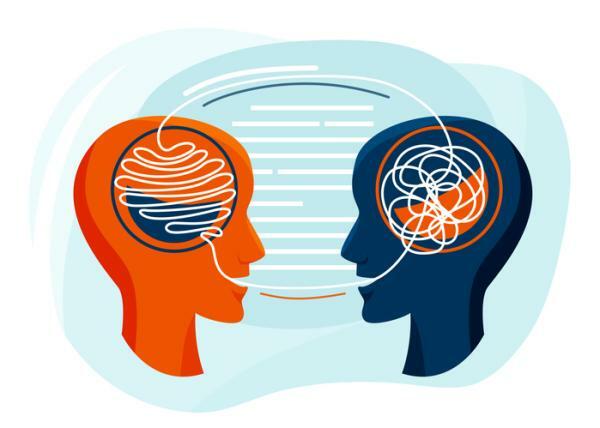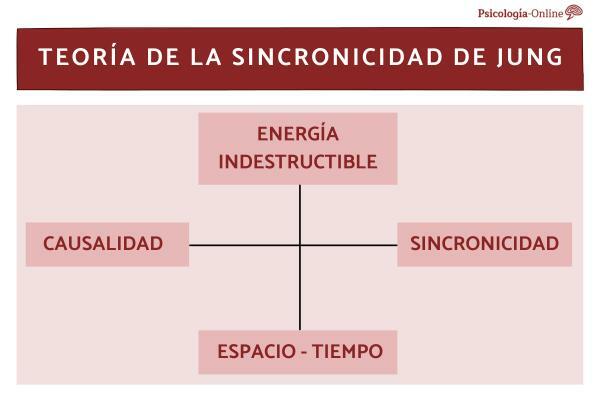
Psycholinguistic research was born with Plato, interested in the world of language and, however, it has become a true matter of linguistics during the second half of the 19th century with linguists beginning to study language acquisition.
In fact, the coinage of the term psycholinguistics is attributed to the American Jacob Robert Kantor in the mid-1930s. In this Psychology-Online article we will delve deeper into this subject to understand the psycholinguistics: what is it, what is its importance and how is it applied, by presenting different examples.
Index
- What is psycholinguistics
- Object of study of psycholinguistics
- Importance of psycholinguistics
- How psycholinguistics is applied
- examples of psycholinguistics
What is psycholinguistics.
In the fifties of the 20th century, the term psycholinguistics began to be used to indicate the research on linguistic behavior carried out on the basis of the concepts and analyzes of the linguists.
If linguistics is commonly understood as the study of language, psycholinguistics or the psychology of language can be defined as the study of psychological and neurobiological factorsunderlying the acquisition, understanding and use of language in humans.
Specifically, psycholinguistics is an interdisciplinary field of study that takes advantage of the contribution of various disciplines such as neuropsychology, cognitive psychology, linguistics and cognitive sciences in general.
Object of study of psycholinguistics.
Psycholinguistics is primarily concerned with the computational processes applied by the brain to understand and produce language. The three primary processes that psycholinguistics covers are:
- Understanding of the language.
- language production.
- Acquisition of language.
Although it shares some notions and some levels of analysis typical of linguistics, it differs from the latter in that try to define theories on the functional architecture of the processes involved in the use of language, investigating how language is represented and processed at a cognitive level and trying to locate it anatomically. This objective is achieved by investigating the different levels that constitute the ability to use language:
- Phonology.
- Morphology.
- Syntax.
- Semantics.
- Pragmatics.
In addition to the study of the anatomical-functional architecture of language processes in healthy subjects, psycholinguistics also studies impaired linguistic processes in subjects with progressive pathologies, such as dyslexia, or who have developed language pathologies after injuries of various kinds such as a stroke, tumor diseases, head injuries or neurodegenerative diseases, such as dementias.

Importance of psycholinguistics.
The results obtained in the study of language pathology and aphasiology are useful for define better cognitive rehabilitation techniques aphasia, evolutionary pathologies or neurodegenerative diseases that affect language.
The data and theories developed about the brain's computation of language can be applied in the following ways:
-
For educational purposes: Understanding the anatomical organization of language in human beings plays an important role in education.
- Improve teaching techniques of the first or second language in school curricula.
- Better understand how the brain and mind work: scientific research on the anatomical-functional organization of language in the human brain human beings may have the purpose of arriving at a better understanding of the functioning of the brain and of the mind.
- Study the relationship between the mind and the brain: thus creating a field of research capable of unifying the biological sciences with the behavioral sciences.
How psycholinguistics is applied.
psycholinguistics apply the scientific method and uses different methodologies to collect experimental data. Next, we show you what methods are used in the field of psycholinguistics:
- behavioral observation: the observation of linguistic errors made by speakers.
- behavioral measures: the measurement of reaction times in linguistic tasks, the lexical decision or deciding whether or not a word presented by the researcher belongs to the language of the test subject.
- Psycho-neurophysiological measures: such as electrophysiological methods or neuroimaging techniques (eye movements, electroencephalography, functional magnetic resonance imaging, positron emission tomography). Through these techniques, the physiological reactions that take place in the brain during the execution of tasks of a linguistic nature are measured.

Examples of psycholinguistics.
Linguist and social critic Noam Chomsky pioneered psycholinguistics, asserting that all normal human beings have a innate linguistic ability and that all human languages have a common underlying structure known as universal grammar.
This directly challenges behavioral learning theories who claim that language is not innate, but learned step by step through imitation and reinforcement. This forms a debate that is still ongoing today.
The language acquisition is an important subheading in psycholinguistics of which the following factors have been studied:
- Study of language acquisition in young children who are learning their mother tongue.
- Study of second language acquisition. Investigate questions such as why learning a second language is easier for children than it is for most adults.
- Study of why non-native speakers may have difficulty distinguishing and pronouncing certain sounds necessary for meaningful speech in their second language, when these sounds are not present or differentiated in their language maternal.
This article is merely informative, in Psychology-Online we do not have the power to make a diagnosis or recommend a treatment. We invite you to go to a psychologist to treat your particular case.
If you want to read more articles similar to Psycholinguistics: what it is, importance and how it is applied, we recommend that you enter our category of basic psychology.
Bibliography
- Arroyo, f. v. (1991). Psycholinguistics. Morata editions.
- Duarte, M. J. P., & Varo, C. v. (2006). Language and brain: connections between neurolinguistics and psycholinguistics. In Proceedings of the First National Congress of Clinical Linguistics (Vol. 1, p. 107-119).
- Zanon, J. (2007). Psycholinguistics and didactics of languages: a historical and conceptual approach. MarcoELE. Journal of Didactic Spanish as a Foreign Language, (5), 1-30.


